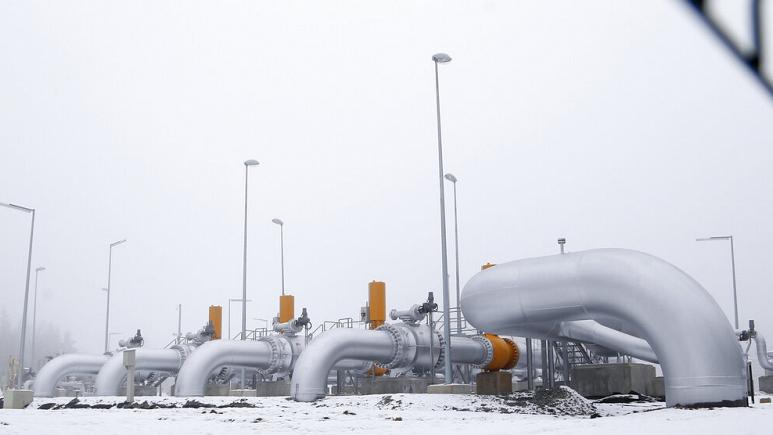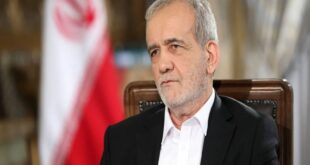
Escalating tensions between the West and Russia over Ukraine have raised concerns about Russian gas flows to Europe, prompting the European Commission and the United States to investigate alternative supplies.
In a joint statement released last week, EU Commission president Ursula von der Leyen and US President Joe Biden pledged close cooperation on energy security.
And after a recent meeting with European energy ministers in France, Energy Commissioner Kadri Simson said the bloc is talking with partners like Azerbaijan about the potential for increasing gas supplies to the continent.
If in the worst-case scenario Russian gas stops flowing to Europe completely, measures to replace supply will not be enough, according to a study by the Brussels-based think tank Bruegel that was published last week.
It concludes that there are two challenges for Europe: finding a replacement for Russian gas supplies and curbing demand domestically to weather the storm, economically and socially.
One of the authors, Bruegel senior fellow Simone Tagliapietra told Euronews that Europe might be headed for a 1970s-style oil crisis scenario.
“Certain factories might need to operate on a shorter production schedule or be closed entirely.”
And governments might need to establish an emergency plan to prioritise the recipients of gas – for example, for “heating in residential homes or for producing electricity” to avoid blackouts.
What if Russian gas supplies are halted in the months ahead?
Looking ahead, there are three scenarios:
If Russia and all other suppliers continue to supply at current levels, EU-wide storage would hit a low of approximately 320 terawatt-hours (TWh) in April 2022.
If Russia cuts supplies at the beginning of February, storage would reach a minimum level of 140 TWh in April 2022.
If in addition to Russia cutting supply, the weather is extremely cold, then EU-wide storage will be empty by the end of March 2022.
Therefore, in the short run, the EU will likely be able to survive a dramatic disruption to Russian gas imports.
Can the European pipeline system sustain additional gas deliveries?
Yes and no. The Iberian Peninsula, for example, is a hub for LNG (liquefied natural gas; gas that has been cooled down to liquid for ease and safety of storage and transport) import terminals.
As a result, the region can import 40 TWh per month, but can only consume 30 TWh. The challenge is transporting the excess gas to the rest of Europe, given that existing pipelines permit a maximum transfer of 5 TWh a month.
Moreover, the central and eastern European pipeline system is designed to bring imports from the east to final consumers.
Despite investment in reverse-flow capacities and new pipelines, if too much gas were to come from the west, pipeline bottlenecks could prevent sufficient deliveries to the easternmost parts of the EU or Ukraine.
What other supply options would be available?
In principle, existing infrastructure allows additional import volumes from Norway and North Africa, and additional LNG volumes, which together could displace current imports from Russia. But while having the infrastructure is one thing, having the gas is another.
Norway already announced that it is delivering as much as it can to the EU and that global LNG markets are very tight – Algeria said something similar.
EU domestic gas production is limited, both in the Netherlands and elsewhere.
Washington is currently negotiating with Qatar on gas supplies to Europe.
Qatar is one of the world’s largest producers of LNG. It sells three-quarters of its production to Asian countries and provides around five percent of gas to Europe.
What if Russian gas supplies are halted for years?
Getting through half a winter without Russian imports could be difficult, but running the European economy for several years without Russian gas would be hugely challenging. While there is more time to prepare, there are also much higher volumes to displace.
In 2021, Russian natural gas exports to the EU amounted to around 1,700 TWh – this would have to be replaced should Russia stop its natural gas exports to Europe completely.
The EU has spare import capacity of roughly 1,800 TWh from alternative suppliers to Russia. This could, theoretically, allow the EU to replace Russian flows entirely.
But it would be at best very expensive, and at worst physically and politically impossible.
Data used is taken from Bruegel’s ‘Can Europe survive painlessly without Russian gas?’

World Opinions – Euronews.com




 World Opinions Débats De Société, Questions, Opinions et Tribunes.. La Voix Des Sans-Voix | Alternative Média
World Opinions Débats De Société, Questions, Opinions et Tribunes.. La Voix Des Sans-Voix | Alternative Média




